
ADDRESS: 1720 Market Street, Saint Louis, Missouri, 63155
TITLE: The Civil War
ARTIST: Mitchell Siporin
TYPE: Mural
STATUS: The mural resides on the wall in the lobby.
YEAR: 1942
Welcome to part 7 of a 10 part series featuring the Saint Louis main post office. For the past 6 days we have been showcasing the murals inside this mammoth building. Since there are over 9 murals I’ve decided to highlight them each individually. Today’s mural is titled “The Civil War” and was done by Mitchell Siporin.
This panel is a representation of The Civil War in Missouri
The first group on the left symbolizes the militant Abolitionist movement directly preceding the war. In the foreground of the center, Union and Confederate soldiers are engaged in combat. The figures in the immediate background of this conflict are portraits of the prominent Confederate leaders in Missouri: Governor Claiborne Jackson and General Jo Shelby. The encampment in front of which they are standing is Camp Jackson, the St. Louis encampment.
At the right end of the panel, prominent Union Generals of Missouri are portrayed. They are, from left to right: Franz Sigel, Nathaniel Lyon, and Frank P. Blair. In the Background, to the left of this group, an army postman and a wounded soldier with news from home are depicted.
Tune in tomorrow for another mural Discovery & Colonization.
Thanks for stopping by, please comment and share below.
David W. Gates Jr.
“Used with the permission of the United States Postal Service®. All rights reserved.”
Sources
- Personal visit on 8/10/2012 by David W. Gates Jr.
- United States Postal Service
- (affiliate link) Democratic Vistas: Post Offices and Public Art in the New Deal
: [Hardcover] Marlene Park, Gerald E. Markowitz.
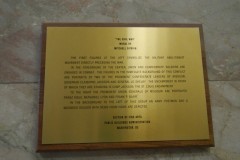
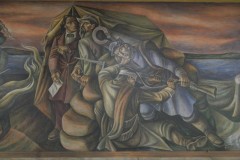
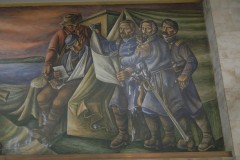
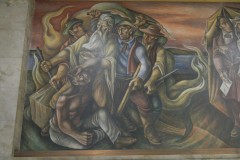
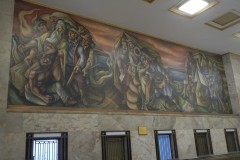
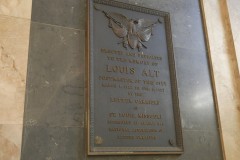




Should you ever get to Ste-Genevieve, Missouri, about an hour south of St. Louis, as I recall, by all means visit their post office. It is the mural there that inspired my interest in New Deal art. Instead of depicting a scene of local industry, agriculture, or Native Americans and settlers, it shows a dance and its attendant reverie. It depicts the area’s French heritage and is called “La Guignolee.” A newspaper interview with the artist, about forty years after she painted the mural, hangs in the lobby.
Cool! I’d like to visit it sometime.